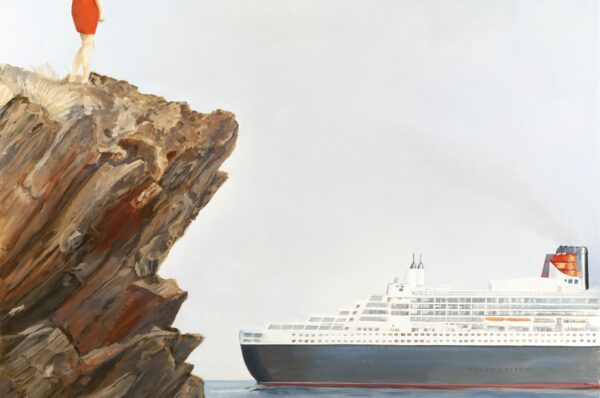Inkography is one of the contemporary forms of artistic graphics.
Also known under other names: digital print, giclée or fine art printing. It belongs to a wide family of printing techniques, namely direct printing. Earlier forms of workshop graphics used gravure, relief or flat printing. Just like its older predecessors (lithographs, mezzotints, etchings or many others), inkography is a work done on paper and, like each print, it is the result of the printing process.
So what defines it? First of all, two things:
- printing with stable pigment inks;
- use of exceptional quality papers with special characteristics.

Such work, properly framed and lit, will be as durable as the watercolor. The pigments used today have much better properties than some of the colors used by watercolorists in the 19th and early 20th centuries. However, giclée is not only about ink jet printing with selected pigments. Paper is equally important—acid-free, without admixtures, preferably made entirely of cotton. This is not a different technology.
It is a matter of careful selection of the best elements of a technology that allow you to achieve the best results. The decision to sell the prints as works of art consequently requires that their longevity is guaranteed. Fine art prints cannot be compared with those available in supermarkets or home furnishings stores.
Here are the top five differences:
- type of paper;
- method of printing;
- supervision of the artist over the process;
- limited collector’s editions;
- signatures and certification.
1. Special papers are used for inkography. They are thicker, natural (made from cotton fibers or wood pulp) and more absorbent. There are no synthetic additives or bleaching substances in them, and they are acid-free. All these factors guarantee high quality and durability of prints.
2. The perfection of giclée printing is based on professional machines and special inks. Home printers or offset presses mix four inks in basic colors. Pigment printers have more inks—from eight to even twelve. Such a large number of output colors enables smooth tonal transitions and an extremely wide range of colors. Importantly, pigment inks are based on resins and contain solid particles. Thanks to them, the prints are much more resistant to fading than those made with the use of ordinary inks.
3. Artists take part in the entire process of making prints:
- choose the works they want to duplicate;
- controls the process of photographing or preparation for printing and color grading;
- oversee the printing trials and determine the colors.
4. The collectible nature of inkographics results from the fact that the work is published in a limited edition. It is usually several dozen numbered prints.
5. The artist approves each copy by describing it in the lower right corner with the title, number of the print and their signature. Each inkography sold on our website is additionally secured with two holograms (on the back of the work and on the certificate). All this means that the prints are treated like the originals.
Due to the limited circulation, giclées achieve great aftermarket value and are treated on a par with works of modern art. Digital prints are a great investment, and widen the availability of art. Beautifully framed, they can become an original gift. Purchasing an inkography is also a great way to start building your own art collection.


